Take a sneak peek at artist Matt McCann's wonderful illustrations for Chekhov: Stories for Our Time, with an introduction by Boris Fishman and translated from the Russian by Constance Garnett, Ilan Stavans, and Alexander Gurvets:

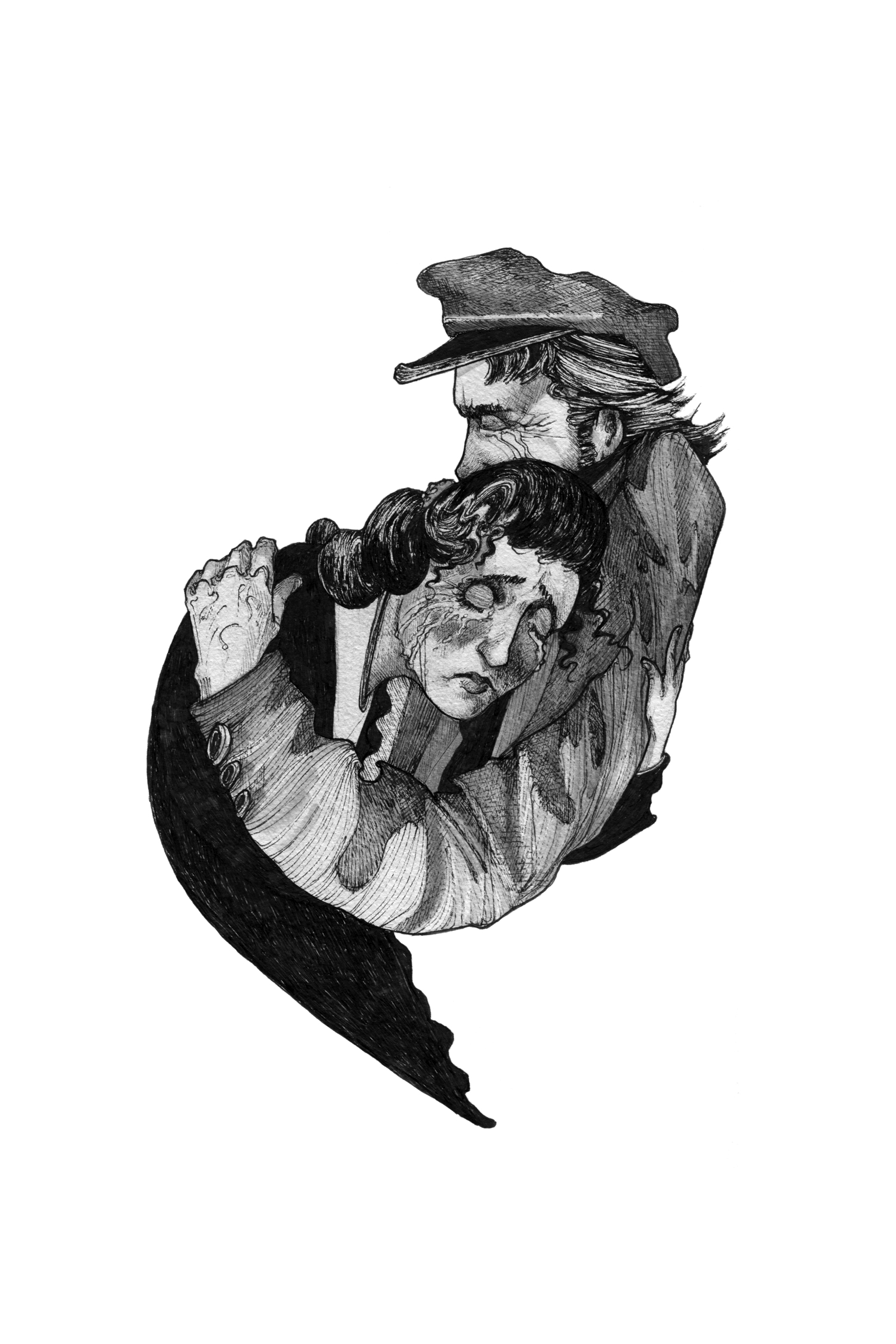
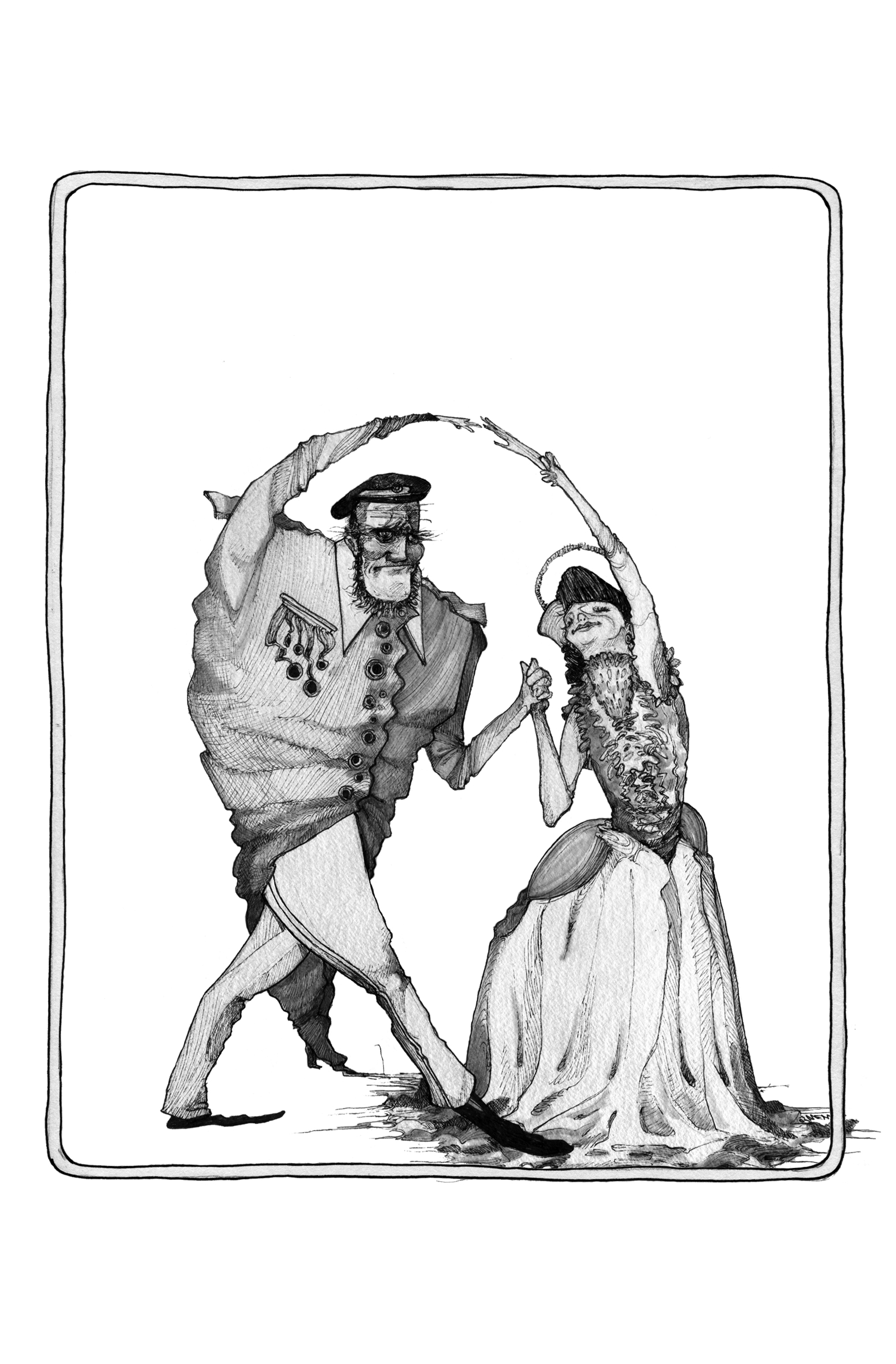
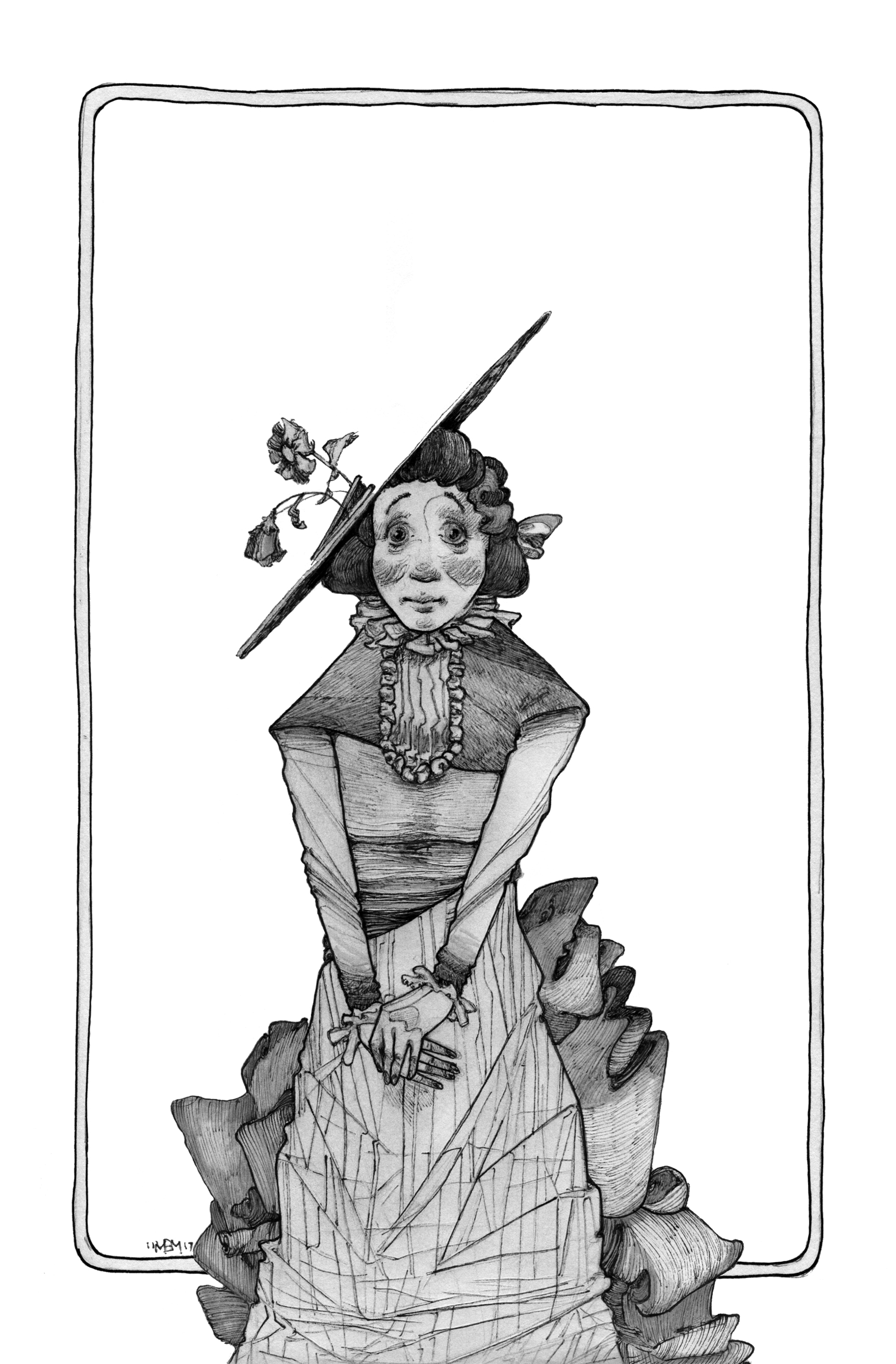
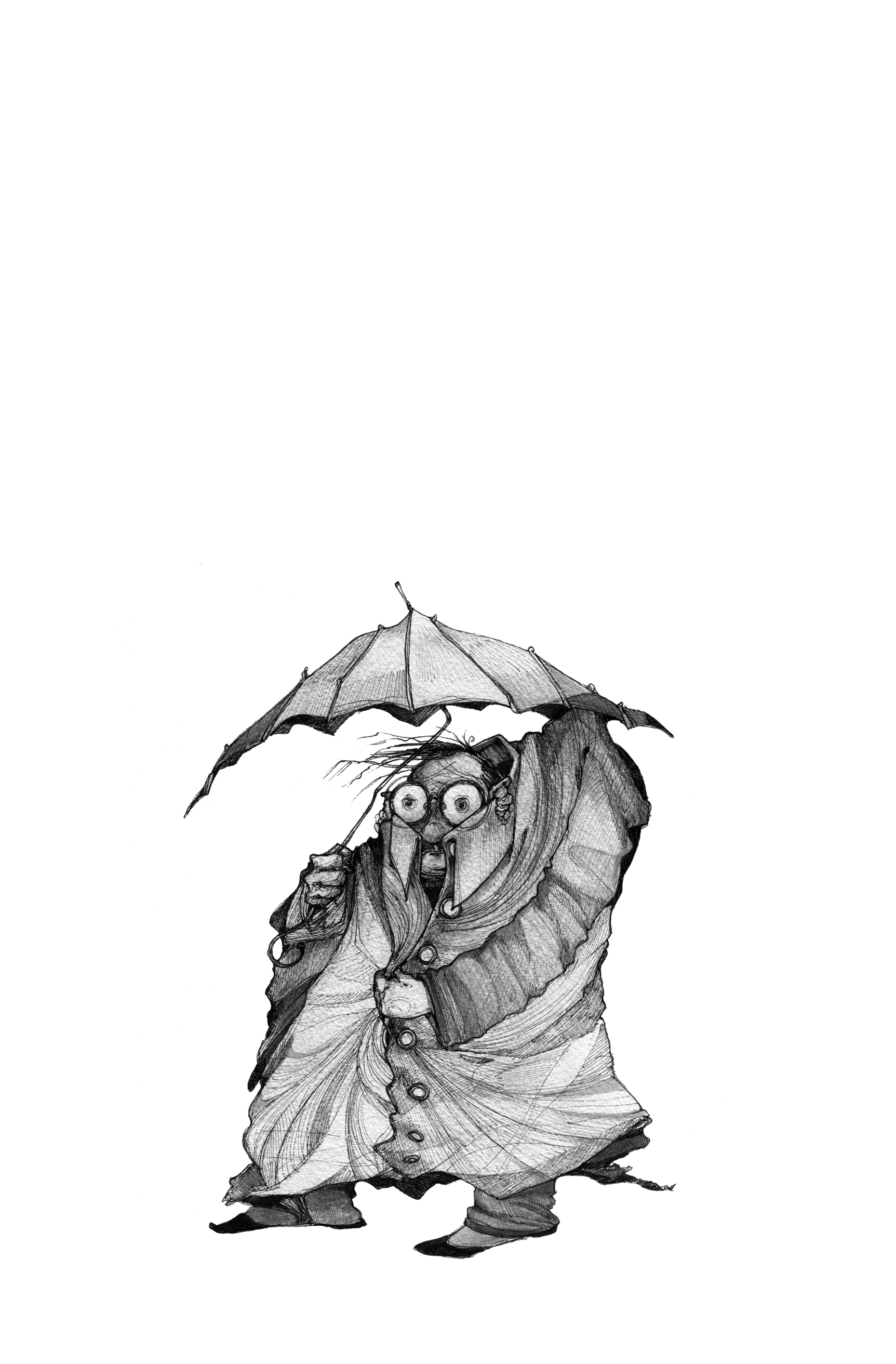

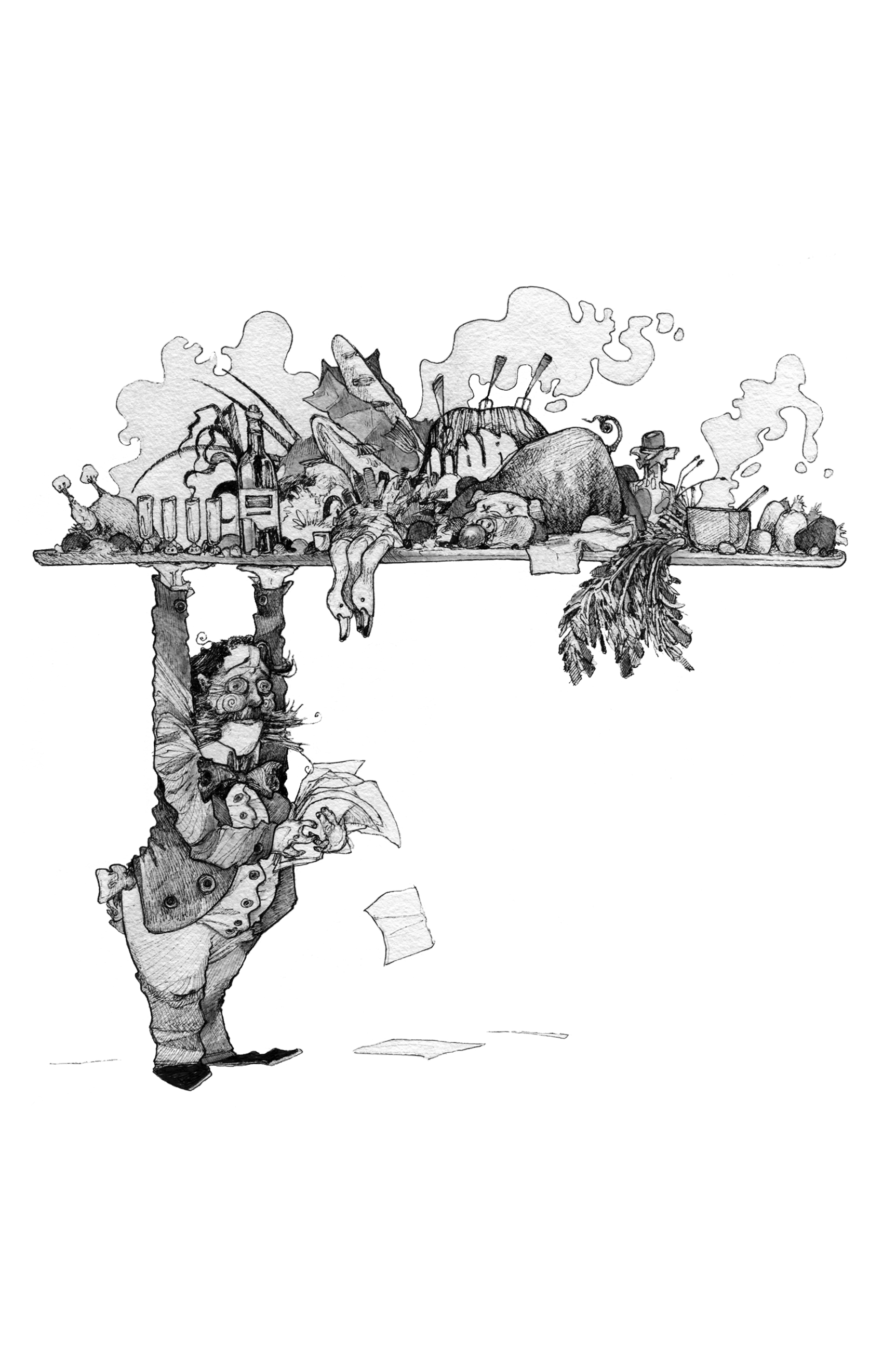
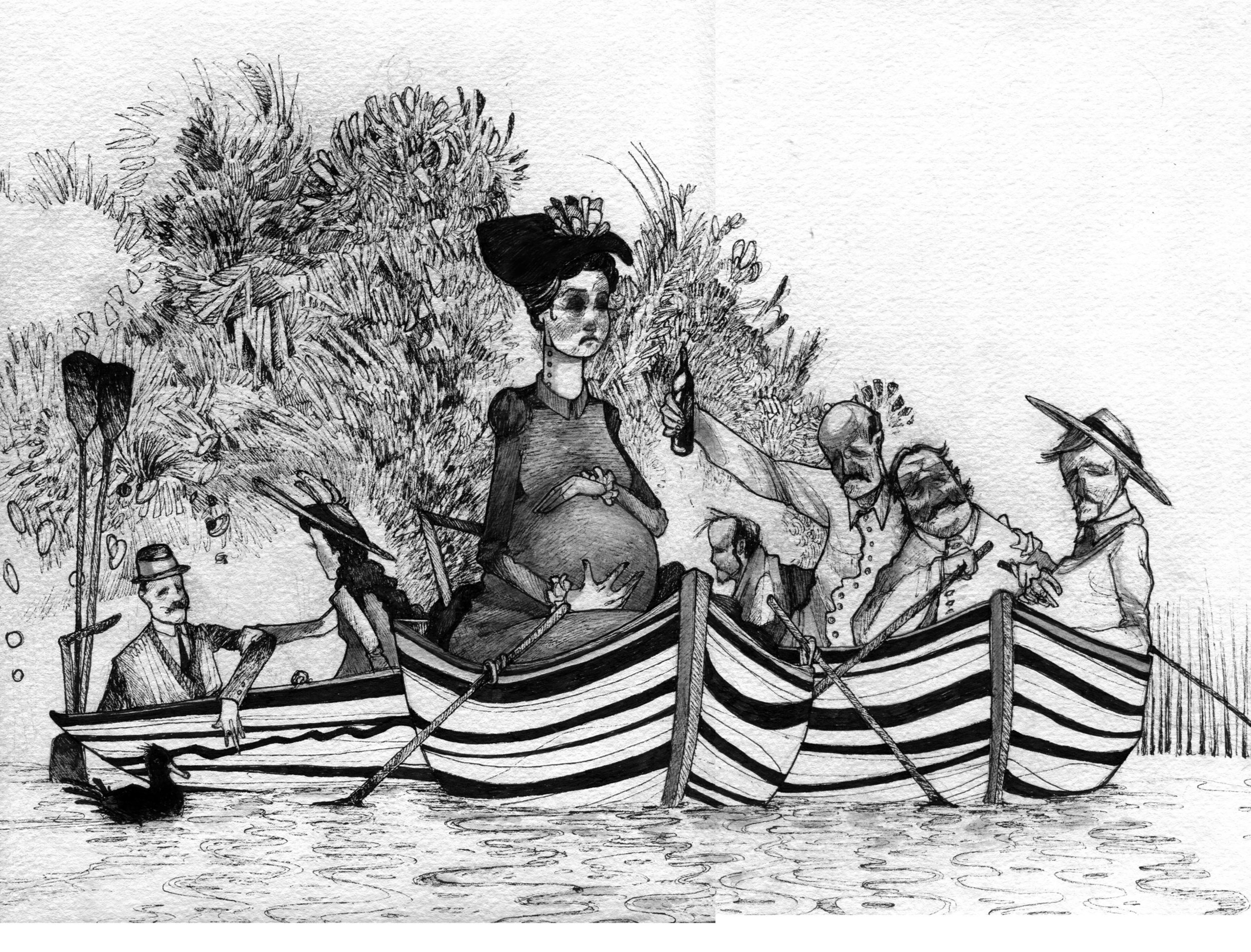
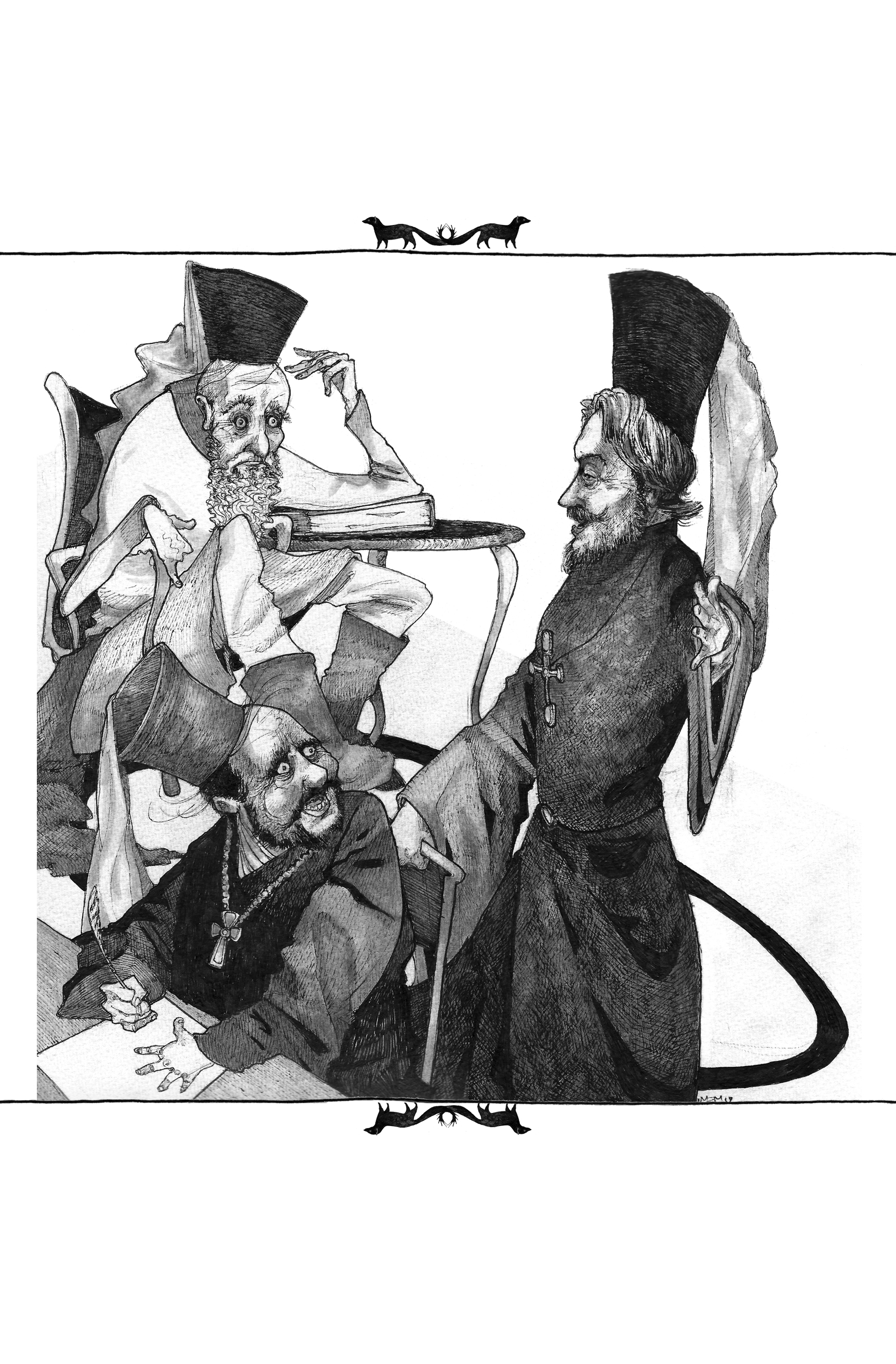
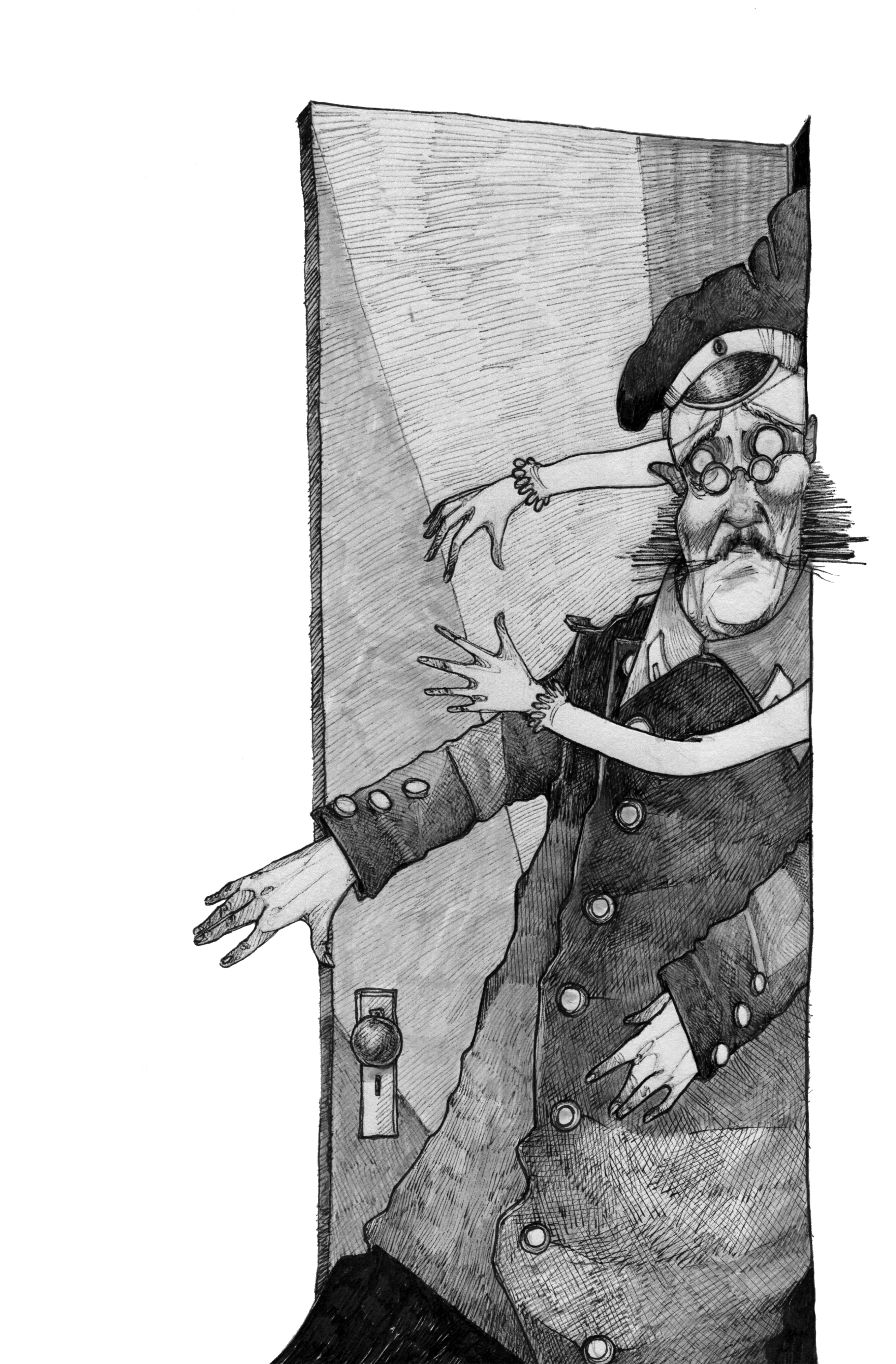
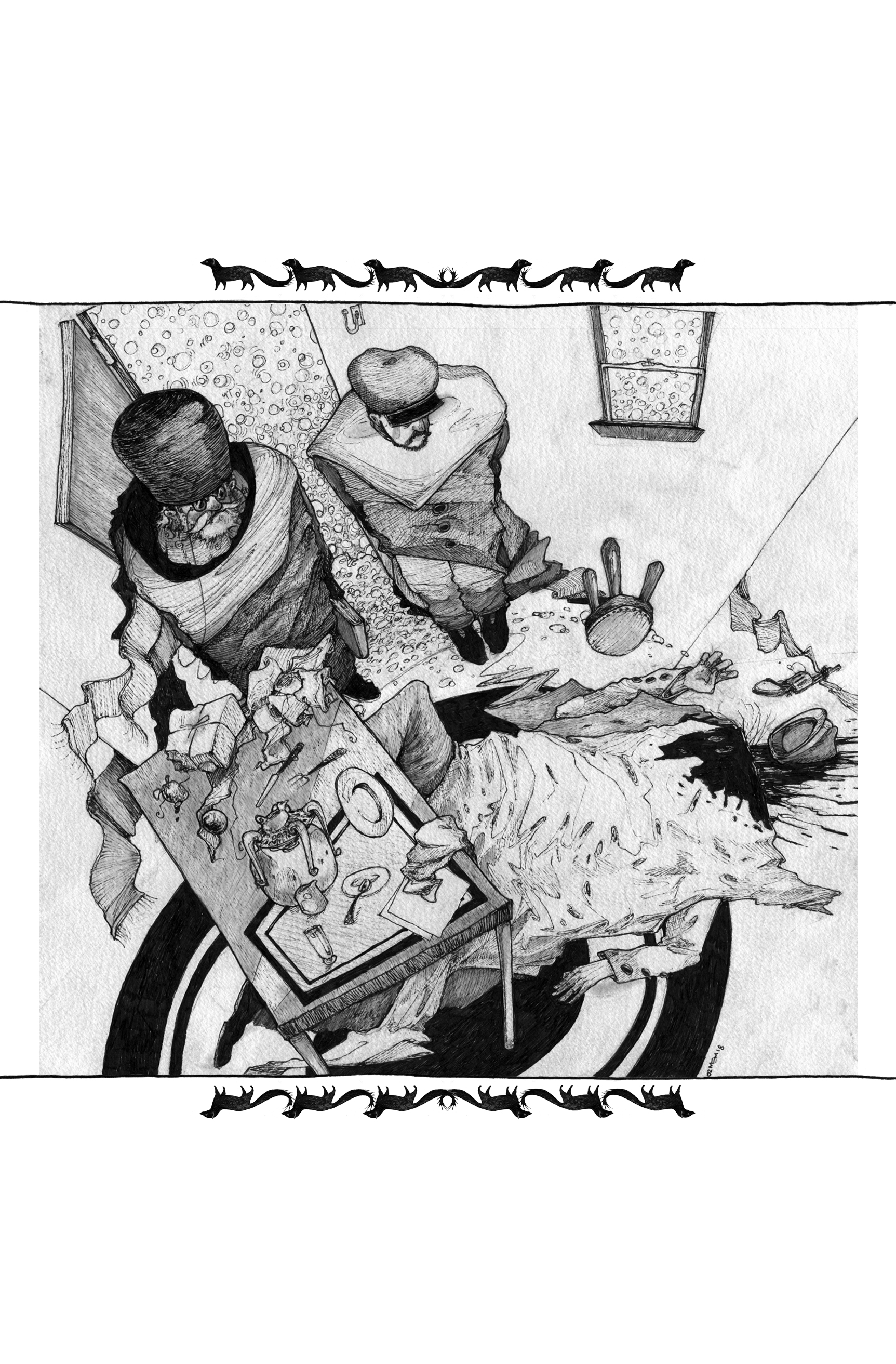
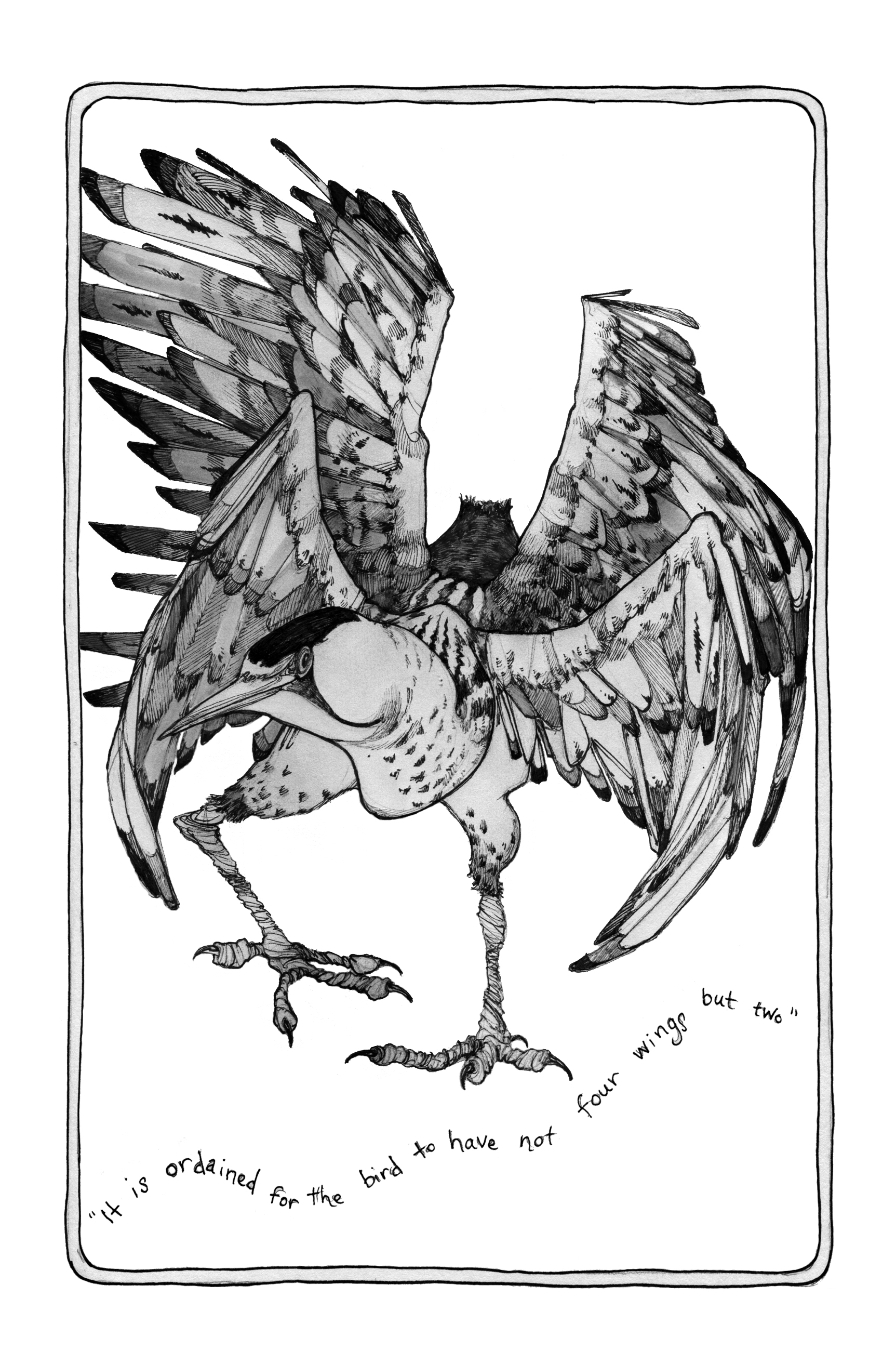

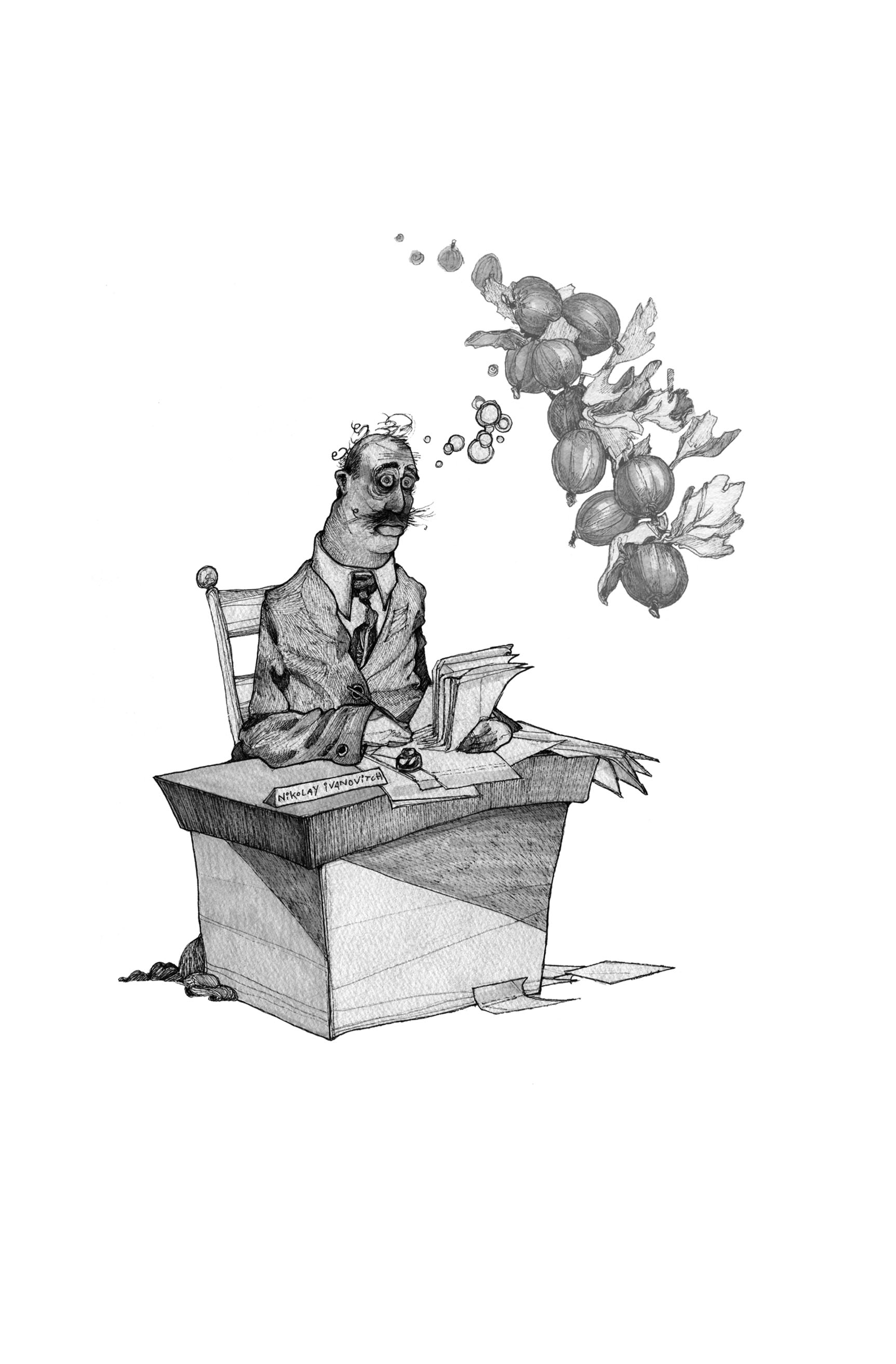
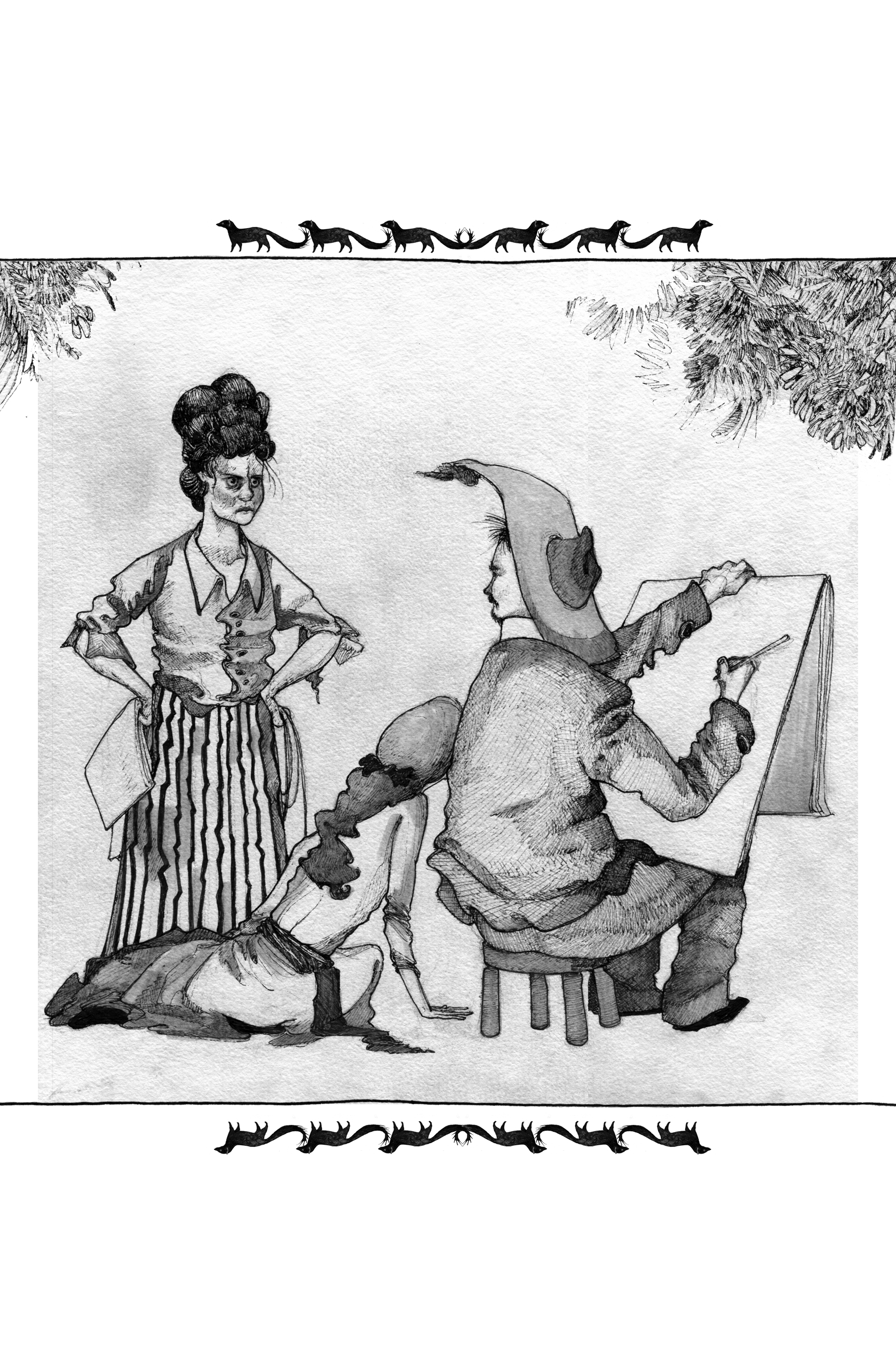
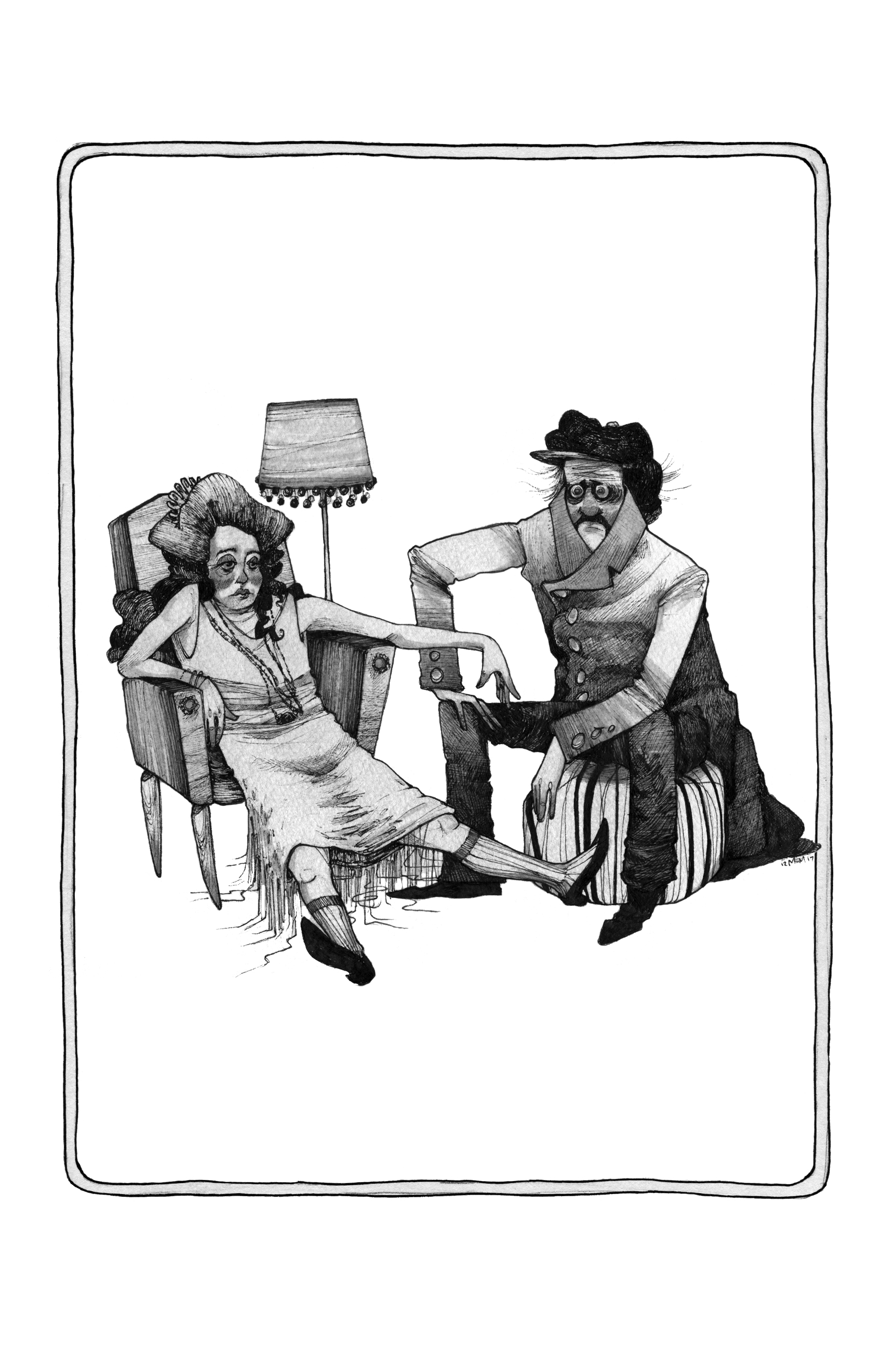
Matt McCann: Artist's Statement
My mental picture of Anton Chekhov before this project was hazy. I vaguely summoned a playwright with a tenacious goatee whose work I hadn’t ever read, though I had spent some time with some of the other Very Serious Giants of Russian required reading, e.g., your Tolstoys, your Dostoevskys — with a smattering of Gogol and Turgenev. I figured he was probably a good read, too, but probably just as Very Serious, and since I had already read some of the others, I’d figure, Why bother? It didn’t help that, like many Very Serious artists, he was tubercular and died tragically young.
Boris Fishman’s invitation to reconsider Chekhov through the prism of the 1890 photograph he discusses in his introduction — that with the white suit and mongoose — was, for me, a revelation. I read a draft of that introduction before I had read a single solitary word of Chekhov, and it completely informed my idea of the man as someone who, along with his generous and total humanity, possessed a whopping dollop of humorousness. So I saw my task as an attempt to mirror that humor, as though making drawings I thought the mischievous-looking fellow wrangling that rodent might giggle at.
For stories where there wasn’t humor, I sought to achieve at least a visual wryness that I read into these stories, even the darkest ones, or tease out a tiny sliver of the story that I thought warranted further consideration. Sometimes that produced weirdness, like a bird with four wings.
In some, I just gave in, guiltily, to cartoonishness. Maybe too often. Maybe these illustrations can or should be dismissed as frivolous — serious literature interrupted by silly nonsense doodles.
Anton Chekhov doodled, though, too. He was pretty good.
—Matt McCann



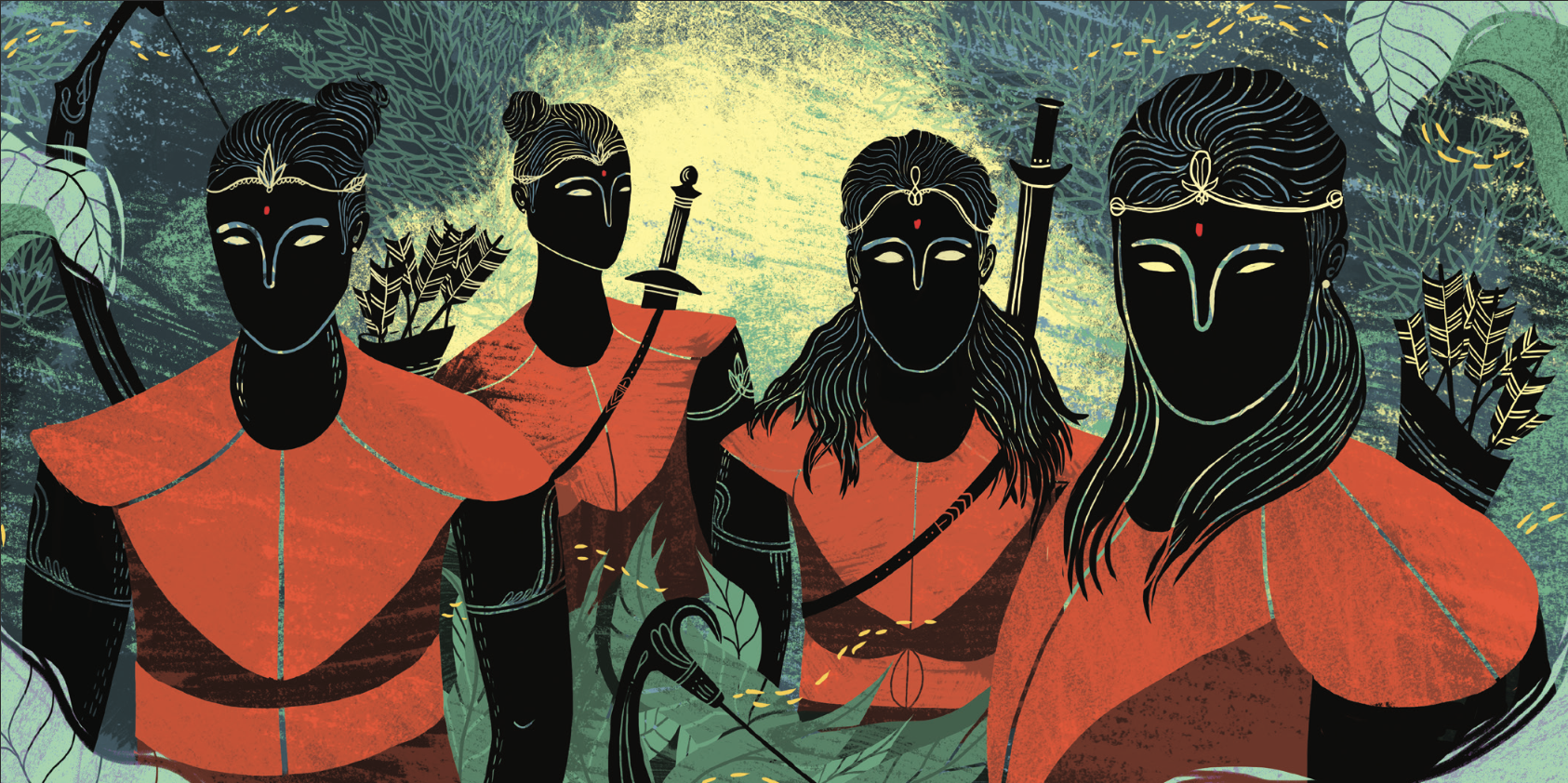









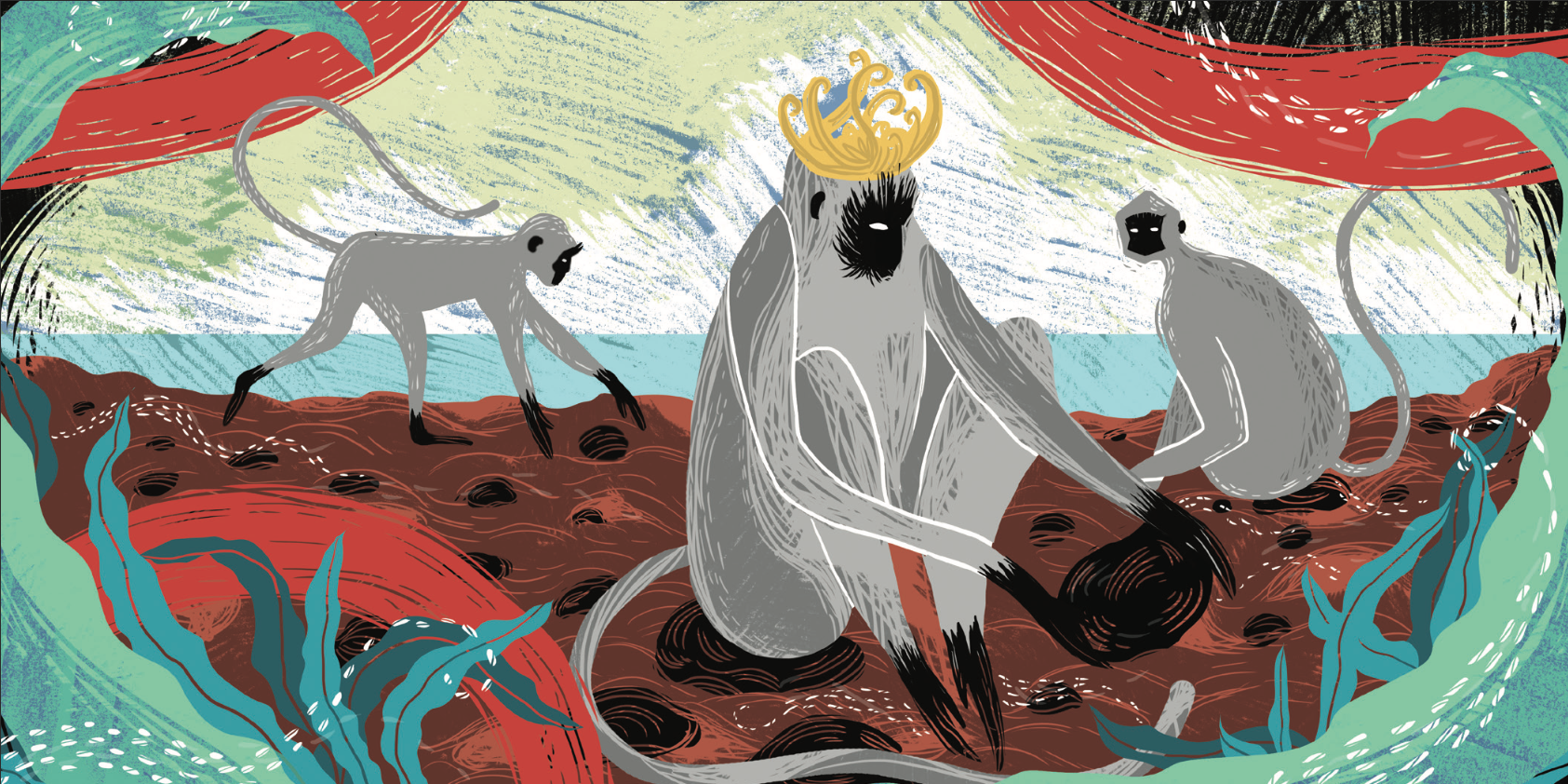

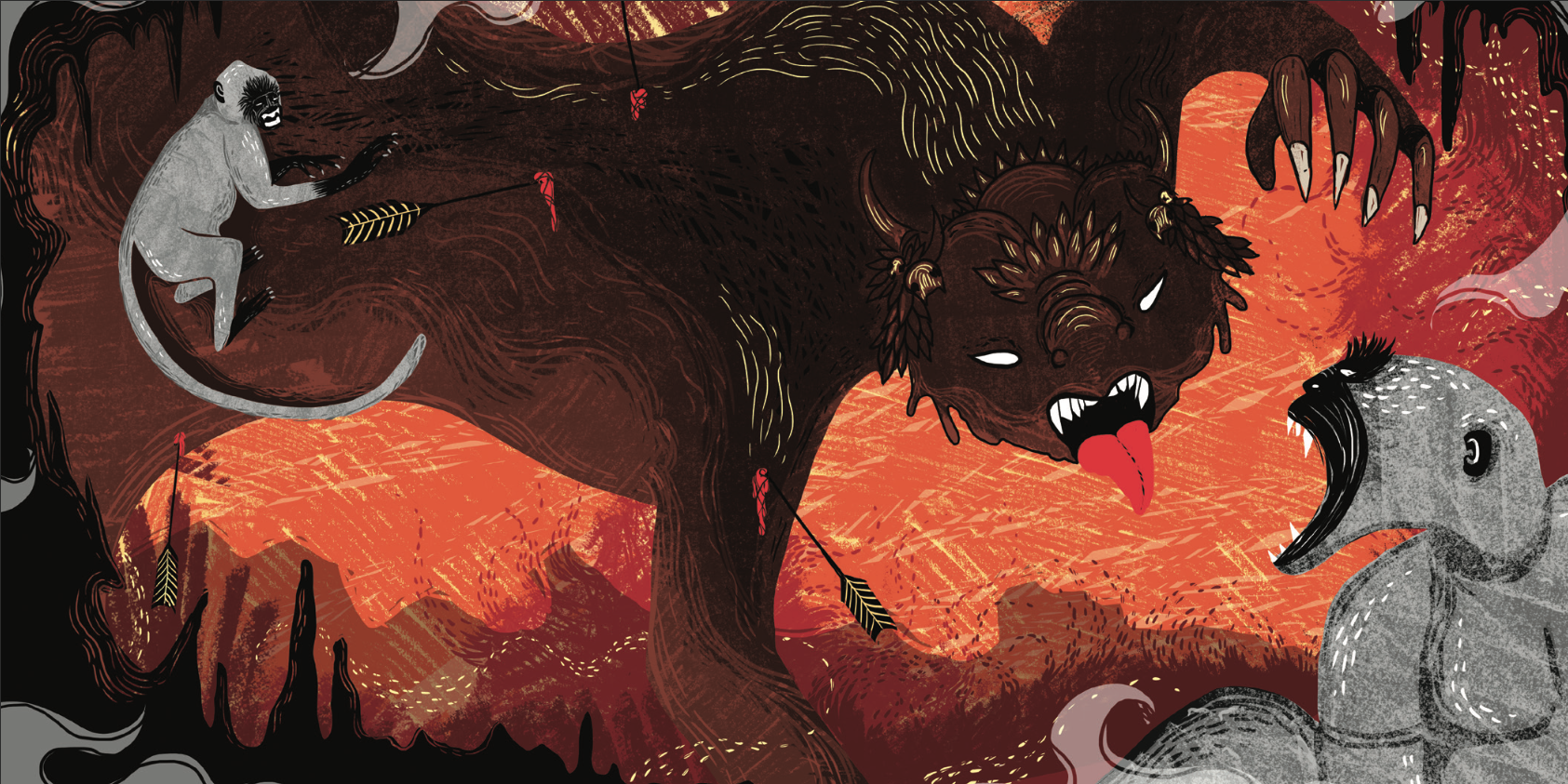

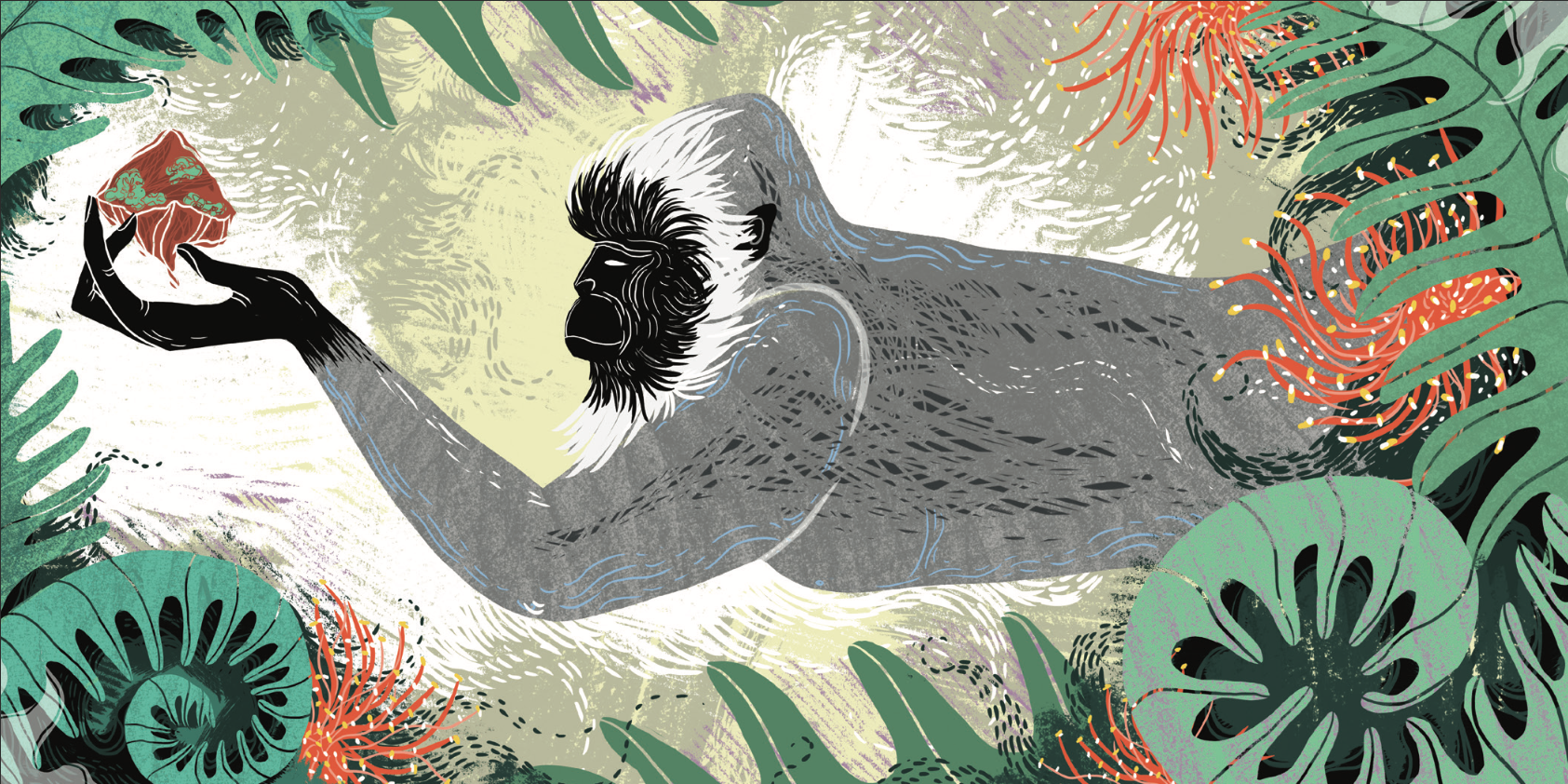

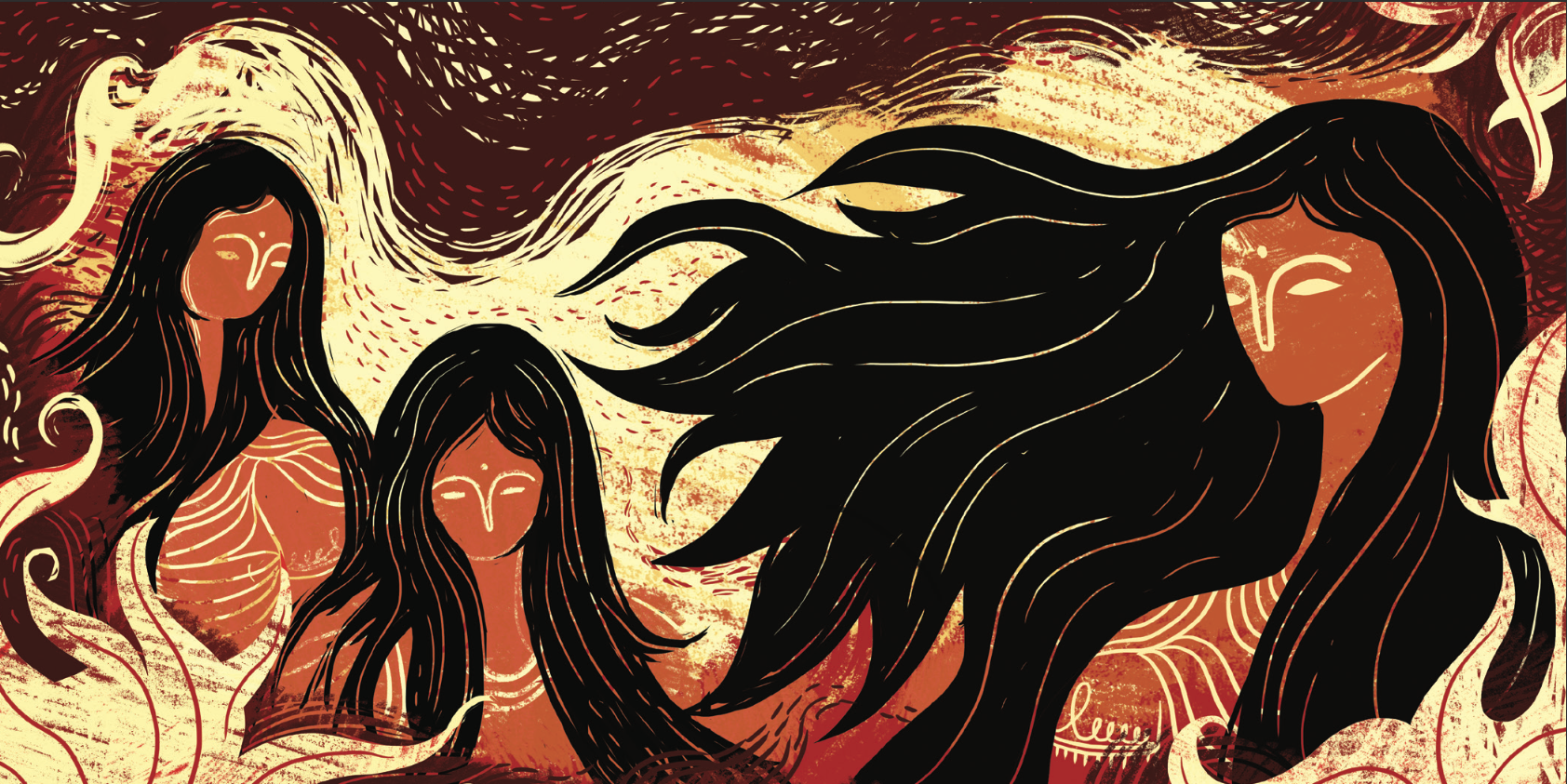

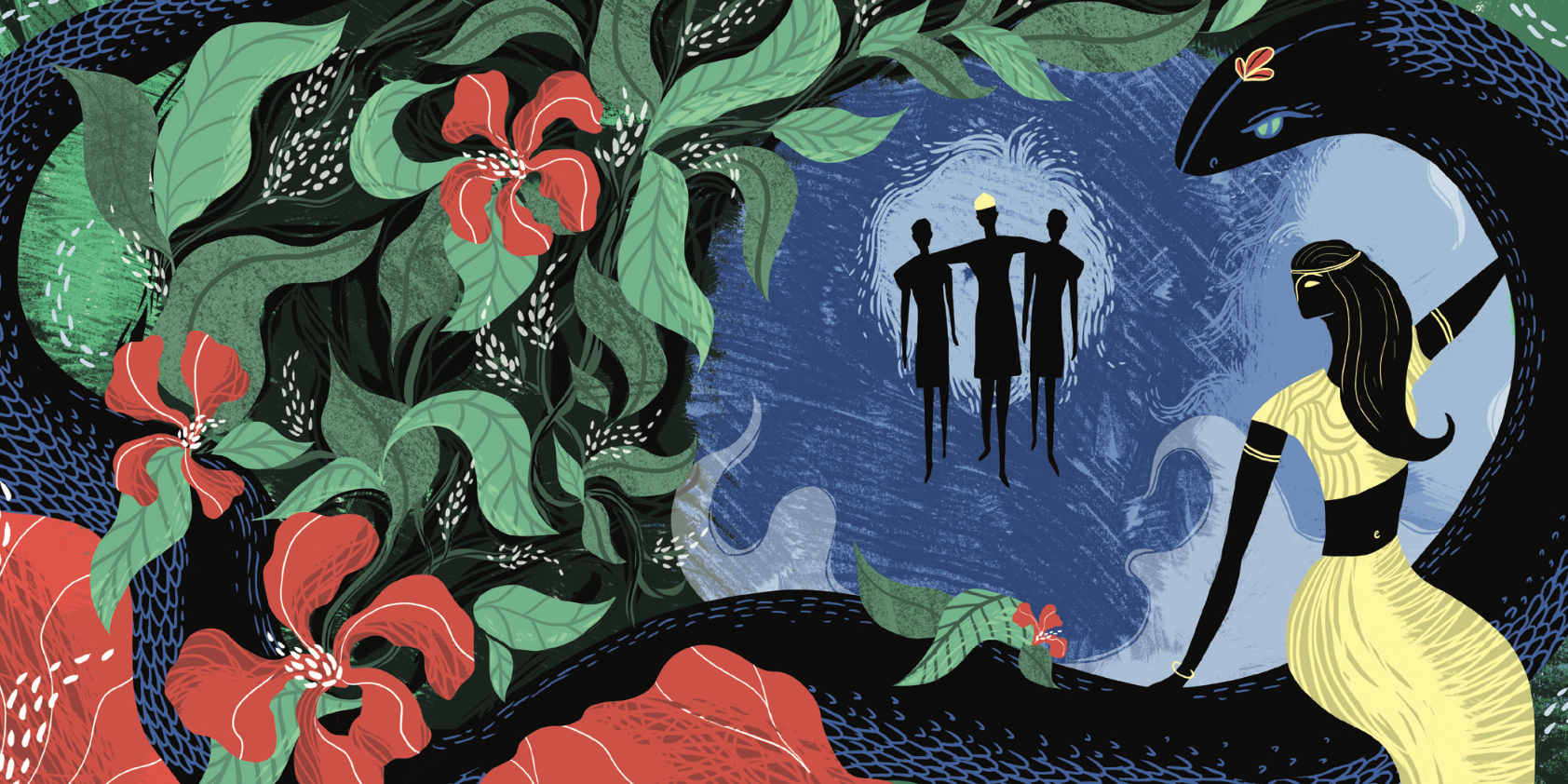
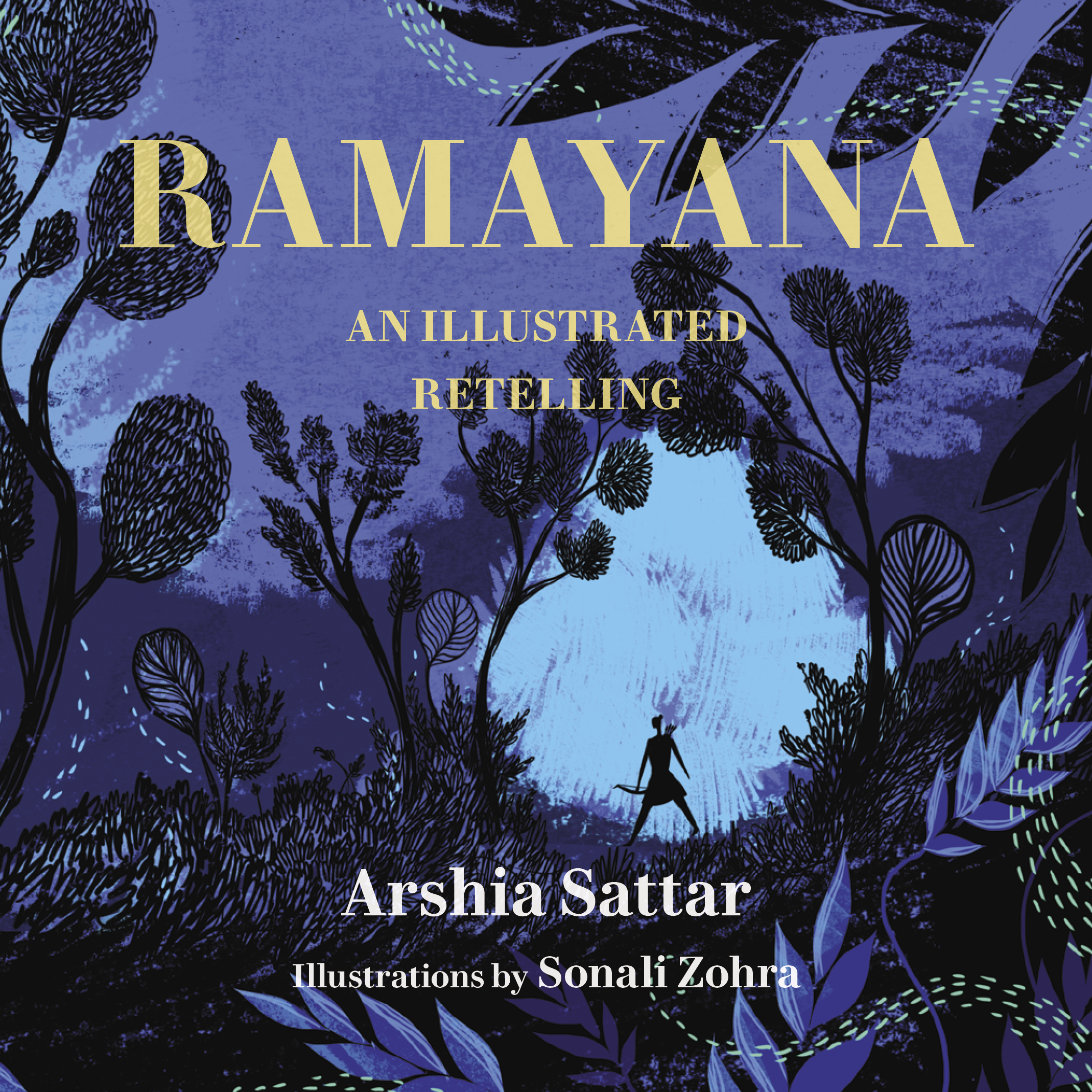
By Anton Chekhov
Introduction by Boris Fishman
Translated from the Russian by Constance Garnett, Ilan Stavans, and Alexander Gurvets
Illustrations by Matt McCann
Restless Classics
The Restless Classics edition of Chekhov: Stories for Our Time presents a must-have collection by the great Russian author who captured humanity in all its complexity, and reintroduces Chekhov as a funny, playful, deeply human, and thoroughly modern writer.
Paperback • ISBN: 9781632061805
Publication date: Jul 24, 2018